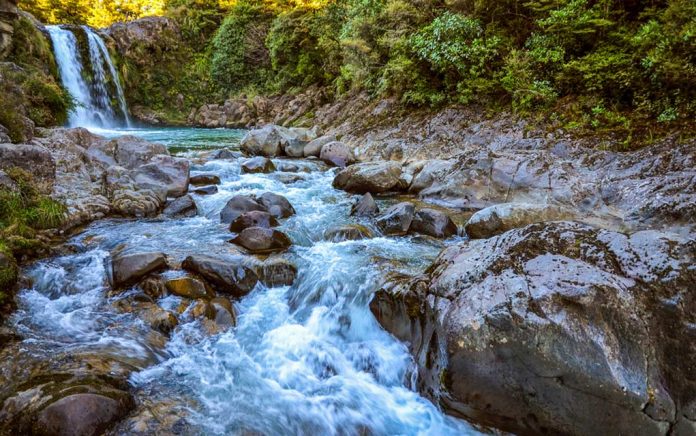
Water is essential for life, but it can also be perilous. Moving through a body of water can be physically demanding, something that’s especially true when that water is moving. Whether in a survival situation or taking a simple stroll through nature, crossing through moving water should be avoided unless there’s no way around it. If you ever have to cross moving water, such as a stream, river, or even flood, make sure to watch out for the following hazards.
What Lies Beneath
Water can be very deceiving, it may look friendly and safe from the surface, but numerous potential hazards can exist beneath the top. Not only could there be dangerous wildlife such as snakes, alligators, or crocodiles lurking below, there can be sharp rocks, downed trees or branches, broken glass, and fishing lines or hooks. The list is almost endless.
All of these items have the potential of being dangerous. You could easily get stuck in fishing lines, tree branches, or even rocks. And just about everyone knows how dangerous marine life can be. Additionally, the risk of suffering a hazardous fall increases when walking through moving water, and there’s no way to tell if there’s anything slippery below the surface until it’s too late.
Invisible Hazards
Frequently, the things we cannot see can pose incredible dangers to you. For example, when crossing any body of water, you run the risk of developing an infection in any preexisting cuts or scrapes. Waterways can also be packed full of bacteria leading to disease. Likewise, waterborne parasites constitute another invisible hazard.
Outside Threats
When crossing major or popular waterways, you increase your chance of running into other people. Typically these kinds of chance encounters aren’t a bad thing. However, people are not always friendly in a disaster situation. If you’re crossing water under this circumstance, you could end up becoming an easy target.
Additionally, you make yourself susceptible to ambushes from both wildlife and other people when you cross a body of water. If you plan to bug out when SHTF, be sure to plan ahead and plot a course that avoids rivers or streams lacking proper crossing points.
Hypothermia
Anytime you expose yourself to a situation where the exterior temperature is lower than your body’s core temperature, you put yourself at risk of getting hypothermia. While hypothermia is frequently associated with winter, it can happen anytime, even during summer. So before you cross a body of water, consider how fast your clothes will dry. This preventative measure is especially important in colder climates where both the water and air are cold.
If possible, strip down to just your underwear and place your clothes in a waterproof bag to cross. This process allows you to keep your clothes dry. Just remember to get dressed as fast as possible when you get out of the water.
Gear
There is some gear to help you get across and stay dry when it comes to fording water. Rope is an essential tool no matter the situation, and fording water is no exception. For instance, it can be used as a lifeline for crossing water in case you slip.
Dry bags are also useful for keeping your clothing, cell phone, and other essential items dry. It’s also a good idea to pack an extra set of clothes in case you have to cross water and end up getting wet.
Waders are another great way to cross water. Wearing them will keep you dry, usually up to about chest height. Additionally, waterproof shoes or boots are always a plus to have on hand. Just remember that they’re only waterproof as far as they reach.
Methods For Fording Water
If you have to cross a moving body of water, here are some methods you can utilize.
- Downed trees: Crossing a river or stream via a downed tree seems like a logical idea, and in some cases, it is. However, trees are much slicker than they appear, and you could slip and fall into the water if you aren’t careful. Using a rope can help in some instances. However, you also run the risk of the tree breaking as you cross. For that reason, be careful when using this option.
- Teamwork: Whenever it’s possible, work as a team when crossing moving water. Link arms and take your time. Teamwork not only provides the benefit of increased safety, but it also makes crossing water faster and simpler for everyone.
- Raft or float: If you’ve got the time to build a raft or float, you should do so. Of course, the practicality of this method since it requires time and materials. However, it does come in handy if there’s no other way to get cross moving water.
Final Notes
Fording moving water can be very dangerous and should only be done if you have no other choice. If you find yourself forced to cross moving water, make sure you take necessary precautions, as discussed above. Never overestimate your abilities, and take your time. Doing so may save your life.
Copyright 2022, TheSurvivalGuide.com














